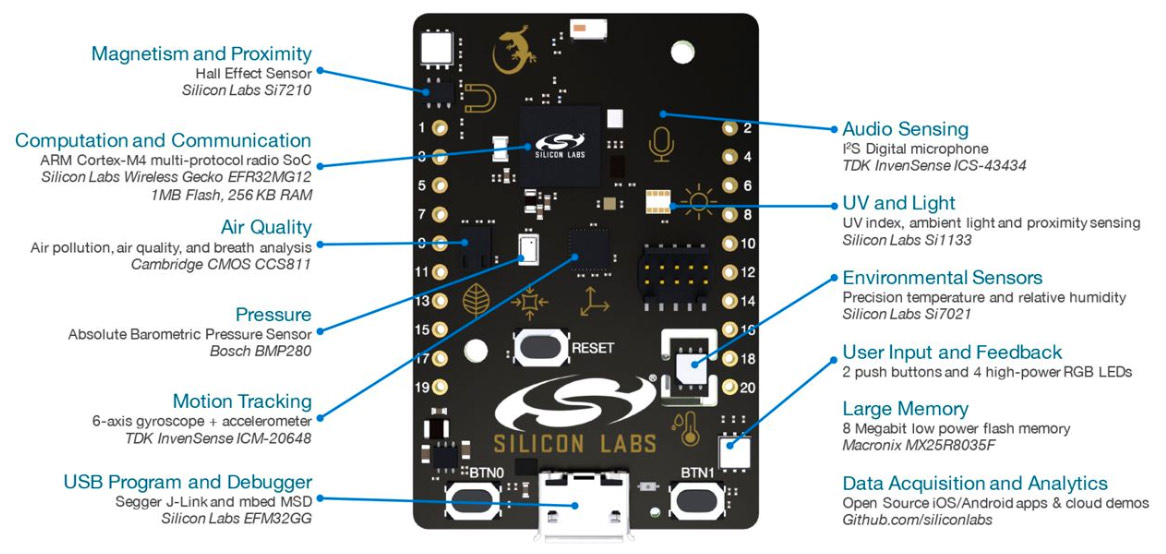Technical Specifications
Warranty Information
All the products supplied by Evelta are genuine and original. We offer 14 days replacement warranty in case of manufacturing defects. For more details, please visit our cancellation and returns page.
All the products supplied by Evelta are genuine and original. We offer 14 days replacement warranty in case of manufacturing defects. For more details, please visit our cancellation and returns page.
Thunderboard Sense 2 is a compact, featured-packed development platform. It provides the fastest path to develop and prototype IoT products such as battery-powered wireless sensor nodes. The development platform combines a broad range of sensors with the powerful multi-protocol EFR32 radio and a mobile app offering Bluetooth communication and cloud connectivity. Thunderboard Sense 2 also has an on-board J-Link debugger and is fully supported in Simplicity Studio.

FAQs:
Q: What sensors are included in the Thunderboard Sense 2 Development Kit?
A: The Thunderboard Sense 2 includes a variety of sensors: temperature, humidity, pressure, light, motion (accelerometer and gyroscope), and gas sensors. These sensors provide comprehensive environmental data for IoT applications.
Q: What is the primary use of the Thunderboard Sense 2?
A: The Thunderboard Sense 2 is designed for rapid prototyping of IoT solutions. It enables you to develop and test sensor-based applications, with features for cloud integration and Bluetooth connectivity.
Q: How does the Thunderboard Sense 2 connect to the cloud?
A: The Thunderboard Sense 2 uses Bluetooth Low Energy (BLE) for communication. It can connect to cloud platforms through Bluetooth to send sensor data, which can be visualized and analyzed using provided software tools.
Q: What development tools are available for the Thunderboard Sense 2?
A: The kit includes software tools like the Thunderboard app for iOS and Android, which allows you to visualize sensor data, configure settings, and explore cloud connectivity options. SDKs and documentation are also available for development.
Q: What are the key features of the Thunderboard Sense 2 Development Kit?
A: Key features include multiple environmental sensors, BLE connectivity, a user-friendly mobile app, and a platform for sensor-to-cloud IoT applications. It is designed for ease of use in creating and testing IoT solutions.
Q: Can the Thunderboard Sense 2 be used for commercial IoT applications?
A: While the Thunderboard Sense 2 is primarily intended for prototyping and development, the data and insights gained from it can inform commercial IoT applications. For production, further development may be required.